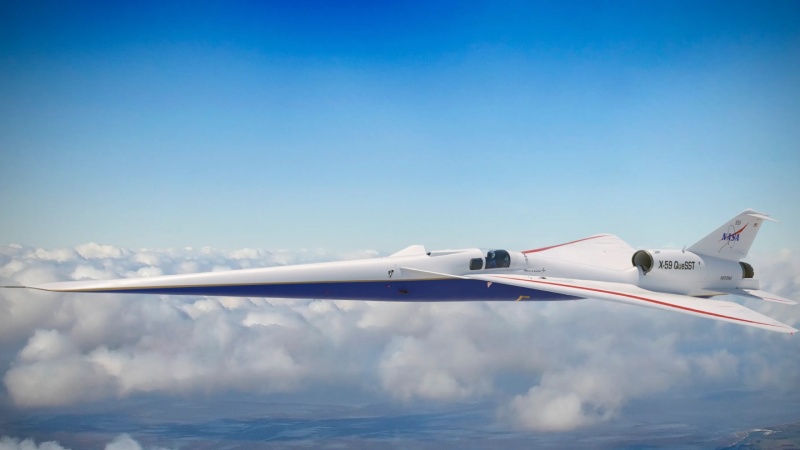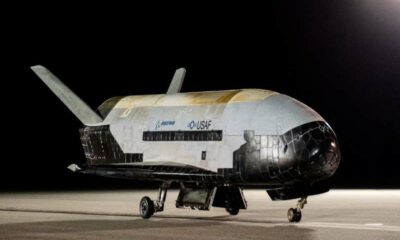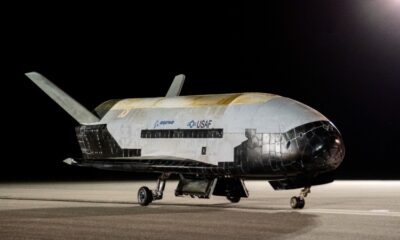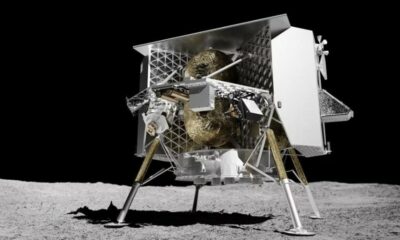Science
NASA and Lockheed’s “quiet supersonic” X-59 jet is finally launched

The “quiet supersonic” X-59, developed by Lockheed Martin and NASA, has finally been unveiled. This aircraft could significantly impact future commercial and military air travel.
After receiving a $248 million grant from NASA in 2018, Lockheed Martin Skunk Works began developing the X-59 years ago. That was only the first of several research projects that NASA planned to support to advance aviation in a big way, whether in terms of size, speed, or efficiency.
This is the first time the aircraft has been seen in public on the tarmac; previously, it has only been visible in the hangar during various stages of disassembly. Naturally, they caused quite a stir at Lockheed’s Palmdale facility.
“In just a few short years we’ve gone from an ambitious concept to reality. NASA’s X-59 will help change the way we travel, bringing us closer together in much less time,” said Pam Melroy, NASA deputy administrator, in a press release.
The X-59 is not a production aircraft prototype; rather, it is an experimental aircraft. The idea is to show that a plane can travel faster than the speed of sound, or in this case, 925 mph, without producing the pressure wave that causes a loud boom that rattles windows.
While completely minimizing the impact of a massive object traveling through the atmosphere at high speed is unachievable, the team wants to lessen the boom to a “sonic thump” that won’t harm people, property, or wildlife as much.
“By demonstrating the possibility of quiet commercial supersonic travel over land, we seek to open new commercial markets for U.S. companies and benefit travelers around the world,” said NASA’s Bob Pearce.
It essentially achieves this thanks to its extremely aerodynamic shape: With its dart-like profile, which is precisely engineered to break up the shock waves coming off it in flight, it is nearly 100 feet long and only 29.5 feet wide.
This shape has an interesting side effect in that it makes it impossible to have a forward-facing window in the cockpit; like the nosecone, it would have to be greatly attenuated. Instead, the group installed a 4K screen that they refer to as the eXternal Visibility System, or XVS, which transmits real-time images from the front.
There are still numerous tests to be completed before the plane can take off. Now that the weight is supported, however, they can proceed to “integrated systems testing, engine runs, and taxi testing” in preparation for the aircraft’s first flight, which is provisionally slated for “later this year.” There are plans for a subsonic flight, additional testing, and the historic first supersonic flight.
Naturally, other parties are interested in this type of flight besides Lockheed and NASA: Boom Supersonic is working diligently to develop a silent supersonic test aircraft. However, don’t expect to hear any loud noises over you anytime soon. Although the technology shows promise, widespread adoption is still years away.
-

 Festivals & Events4 weeks ago
Festivals & Events4 weeks agoList of March National Days for Small Business Marketing to Boost Your Brand
-

 Business2 weeks ago
Business2 weeks agoNayef Doleh Examines International Humanitarian Fundraising Strategies
-

 Business2 weeks ago
Business2 weeks agoHow Black Banx is Redefining Global Banking Strategies in 2025
-

 Tech3 weeks ago
Tech3 weeks agoMicrosoft Teams to End SMS Messaging Feature Support for Android Phones and Switch to Phone Link App as Alternative
-

 Entertainment4 weeks ago
Entertainment4 weeks agoWinning Awards for Your Business to Boost Your Credibility
-

 Tech3 weeks ago
Tech3 weeks agoHow to Switch Between Microsoft Teams and Skype, How To Export Messages, Files, and Contacts from Skype Before It Shutting Down
-

 Startup3 weeks ago
Startup3 weeks agoFrom Trends to Sales: How Small Businesses Can Capitalize and Maximum Reach on Social Media
-

 Education2 weeks ago
Education2 weeks agoThe Power of Differentiated Instruction: Patrick Granfar Discusses Its Impact on Student Learning























